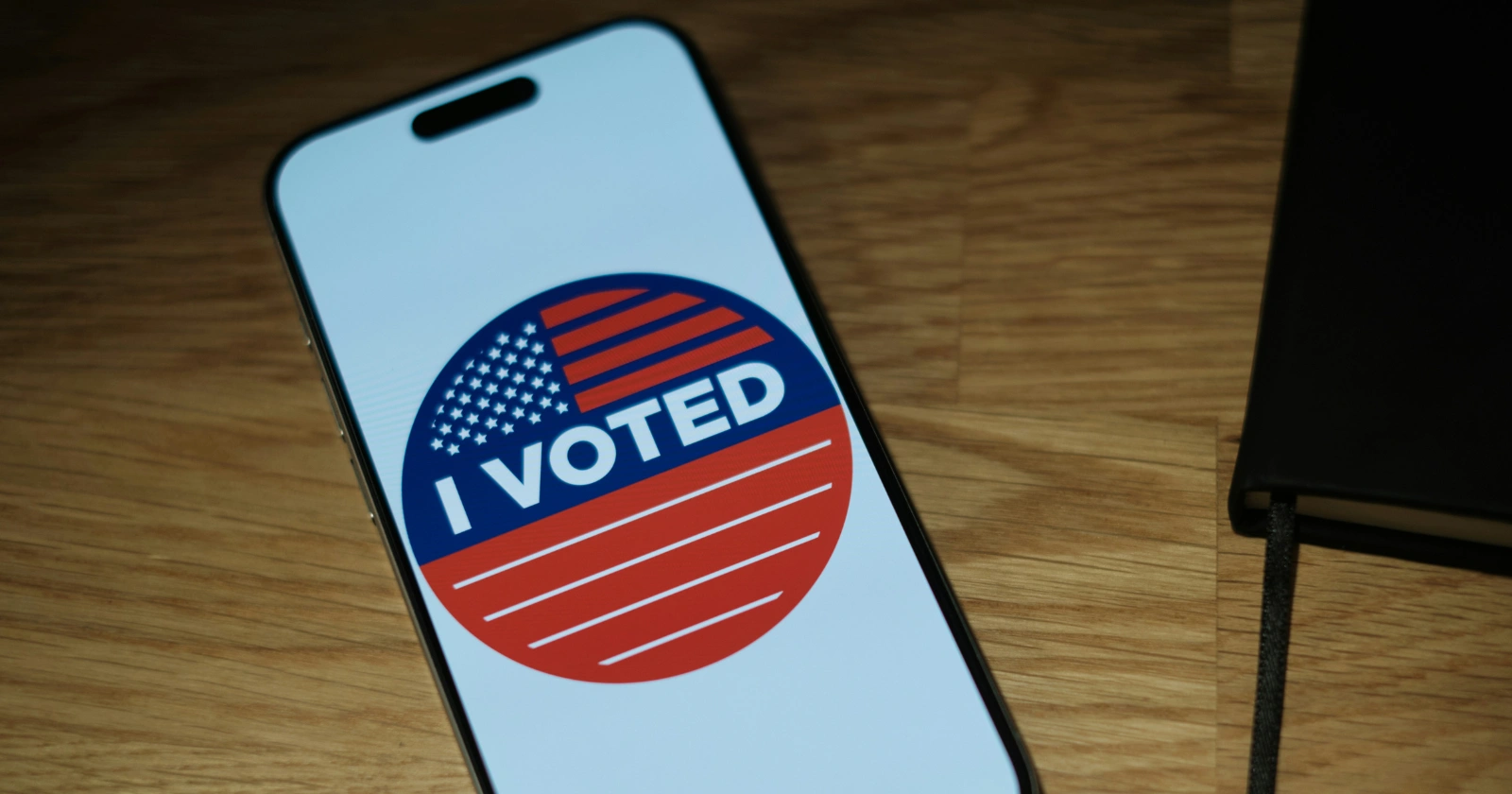Artificial intelligence has emerged as a powerful force in global elections, reshaping how campaigns connect with voters and manage information flows. In 2024, a year marked by elections in over 60 countries representing nearly half the world’s population, AI-driven tools demonstrated their potential to amplify democratic participation while simultaneously introducing unprecedented challenges.
Instances like the AI-generated robocall mimicking President Joe Biden’s voice during the New Hampshire primary highlighted how synthetic content could mislead voters, urging them to skip voting under false pretenses. Such events underscore the rapid evolution of technology in political arenas, where innovation meets vulnerability.
Synthetic campaigns, powered by advanced AI algorithms, enable the creation of highly tailored messages that resonate on a personal level. These campaigns draw from vast datasets, including social media behaviors and demographic details, to craft communications that feel intimately relevant. For example, in India’s 2024 parliamentary elections, AI facilitated personalized video appeals from candidates, allowing smaller parties to compete more effectively against well-funded opponents.
Yet, this personalization comes with risks, as seen in Slovakia’s parliamentary vote, where a fabricated audio clip alleging vote rigging spread rapidly on social media, exploiting gaps in content moderation policies and pre-election media blackouts.
The dual-edged nature of AI in elections reveals a landscape of opportunity and peril. On one hand, tools like language translation bots have broadened access for linguistically diverse populations, enhancing voter turnout in multilingual democracies such as South Africa and Mexico.
On the other, the proliferation of deepfakes—realistic AI-generated media—has fueled misinformation, eroding public trust in electoral processes. As 2025 unfolds with ongoing elections in regions like Europe and Asia, the lessons from 2024 emphasize the need for balanced approaches that harness AI’s benefits while safeguarding democratic integrity. This evolving dynamic invites a closer examination of how technology influences the very foundation of free and fair voting.
Decoding Synthetic Campaigns
Synthetic campaigns represent a shift toward AI-orchestrated political strategies that blend data analytics with generative technologies. These campaigns leverage machine learning to produce content at scale, transforming traditional outreach into dynamic, responsive operations.
Tailored Voter Interactions
AI excels in analyzing extensive data to build detailed voter profiles. By processing browsing histories, social interactions, and demographic information, algorithms deliver messages calibrated to individual preferences.
In the 2024 U.S. elections, campaigns utilized AI chatbots to respond to voter queries in real time, providing information on polling locations and policy positions. This approach not only boosts engagement but also allows resource-limited candidates to reach broader audiences effectively.
Rapid Content Creation
Generative AI streamlines the production of diverse media, from images to videos, enabling campaigns to generate volumes of material quickly. Smaller political entities, previously hampered by budget constraints, now rival larger ones.
For instance, during Mexico’s 2024 presidential race, AI tools helped create localized advertisements that addressed regional concerns, leveling the playing field and fostering more inclusive political discourse.
The Shadow of Deepfakes
Deepfakes pose one of the most pressing threats within synthetic campaigns. These AI-fabricated videos or audios can depict public figures in false scenarios, manipulating perceptions.
A notable case occurred in Argentina’s 2023 elections, where leaked audio clips, suspected to be AI-generated, sparked controversy by alleging misconduct. Although authenticity remained unconfirmed, the incident illustrated how such content could sow doubt and influence voter sentiment.
External Influences
Foreign entities increasingly deploy AI to interfere in elections, automating disinformation to obscure origins and amplify reach. Global incidents, including those in African and Asian nations during 2024, showed how AI-enhanced operations targeted electoral trust, prompting international calls for vigilance.
Democracy Under AI’s Lens
AI’s integration into elections yields profound effects, both enriching and endangering democratic principles. Positive advancements coexist with risks that could undermine societal cohesion.
Boosting Participation
AI enhances voter outreach through tools like multilingual translation, allowing politicians to connect with diverse groups. In the European Union’s 2024 parliamentary elections, AI-powered platforms translated speeches, increasing accessibility for non-native speakers and encouraging higher participation rates.
Electoral bodies employ AI to refine processes, such as detecting duplicates in voter rolls and optimizing logistics. This efficiency reduces errors and builds confidence in systems, as evidenced by streamlined operations in the United Kingdom’s 2024 general election.
For individuals with disabilities, AI offers customized aids, from voice-assisted voting guides to adaptive interfaces, promoting broader inclusion.
Undermining Foundations
The spread of synthetic content risks eroding trust, creating a “liar’s dividend” where genuine information faces skepticism. In 2024, overhyped fears of AI misinformation led some politicians to dismiss real scandals as fabrications, complicating public discourse.
AI algorithms often reinforce echo chambers, heightening polarization by exposing users to extreme views. Studies from Brookings Institution in 2024 noted this trend exacerbating divisions in U.S. campaigns.
Biases embedded in training data perpetuate inequalities, leading to discriminatory targeting. Accountability suffers as overwhelming content volumes hinder oversight of officials.
Key Facts and Findings:
- In 2024, over 78 documented election deepfakes circulated globally, yet they accounted for less than 1% of fact-checked misinformation, per Columbia Knight First Amendment Institute analysis.
- Twenty-six U.S. states enacted deepfake regulations by 2025, focusing on prohibitions and disclosures, according to the National Conference of State Legislatures.
- AI chatbots increased voter turnout by small margins in U.S. trials, with one randomized study showing a 2-3% uplift in participation.
- Foreign AI interference incidents rose 15% in 2024 elections, as reported by the Center for European Policy Analysis.
Navigating Regulatory Waters
Addressing AI’s role in elections demands robust frameworks to mitigate harms while preserving innovation.
Worldwide Initiatives
Nations and bodies like the European Union have advanced regulations, mandating labels for AI-generated content. India’s 2024 advisories required disclosures in political ads, setting precedents for transparency.
In 2025, U.S. states continued expanding laws, with updates emphasizing metadata disclosures in Colorado and Utah.
Promoting Openness
Solutions include watermarking and disclaimers to identify synthetic media. Challenges persist in enforcement across platforms, but initiatives like the UN’s AI for Good summits foster collaboration.
Balancing Tech and Intent
AI amplifies actions of users, whether benevolent or malicious. Focus shifts to guiding its application for democratic good, as emphasized by experts on platforms like LinkedIn.
Forging Resilient Systems
Stakeholders must unite: governments for policies, tech firms for detection tools, and educators for media literacy. Public campaigns on identifying deepfakes, such as glitch analysis, empower voters.
| State | Approach to Deepfake Regulation | Key Provisions | Effective Year |
|---|---|---|---|
| Minnesota | Prohibition | Bans publication 60 days before election | 2023 |
| Texas | Prohibition | Restricts deepfakes 30 days prior | 2023 |
| California | Disclosure | Requires labels on AI media | 2024 |
| New York | Disclosure | Mandates metadata and disclaimers | 2025 |
| Florida | Hybrid | Prohibits and requires disclosures | 2024 |
| Colorado | Disclosure | Includes metadata requirements | 2025 |
| Utah | Disclosure | Focuses on file creator info | 2025 |
| Wisconsin | Specific Law | Separate from general impersonation | 2024 |
| Michigan | Prohibition | Targets election-period deepfakes | 2025 |
| Washington | Disclosure | Emphasizes transparency in ads | 2024 |
This table highlights U.S. state approaches, drawn from National Conference of State Legislatures data as of 2025.
Conclusion
Artificial intelligence stands at the crossroads of electoral evolution, propelling synthetic campaigns that redefine voter-campaign dynamics. From hyper-personalized engagements that democratize access to the perils of deepfakes that challenge truth, AI’s footprint in elections grows indelible. The 2024 global polls, encompassing billions, revealed AI’s capacity to enhance efficiency and inclusion, as in streamlined voter rolls and translated outreach.
Yet, they also exposed vulnerabilities, with incidents like Slovakia’s fabricated audio and Argentina’s disputed leaks illustrating how synthetic content can distort realities and amplify divisions. As 2025 advances with fresh electoral cycles, these experiences inform a path forward, emphasizing the imperative for adaptive strategies.
Regulatory progress offers hope, with expanded state laws in the U.S. and international guidelines promoting disclosures and watermarks. Tech giants, through pledges like those from Google and OpenAI, commit to combating misuse, while research from institutions such as Brookings underscores the need for evidence-based policies. Education remains pivotal, equipping citizens with skills to discern authentic from generated media amid an information flood.
Ultimately, safeguarding democracy requires collective vigilance—governments enacting balanced laws, platforms enforcing robust moderation, and societies fostering critical thinking. By embracing AI’s positives and confronting its risks head-on, electoral systems can emerge stronger, ensuring that technology serves as a bridge to informed participation rather than a barrier to trust. The era of synthetic campaigns demands not retreat but resilient innovation, preserving the essence of democratic choice for generations ahead.
FAQs
A synthetic campaign uses AI to generate and distribute personalized content, such as tailored ads or chatbots, based on voter data analysis.
AI enables real-time translations and chatbots that answer queries, making information accessible to diverse linguistic groups and boosting engagement.
Deepfakes can spread false depictions of candidates, leading to misinformation that erodes trust and influences voter decisions.
Yes, 26 states have laws focusing on prohibitions or disclosures for political deepfakes, with more legislation emerging in 2025.
Look for inconsistencies like unnatural pauses in audio, mismatched lip sync in videos, or distorted features in images.
Foreign actors use AI to automate disinformation, making it harder to trace and amplifying doubts in electoral processes.
AI risks amplifying existing biases from training data, but ethical designs and diverse datasets can mitigate this issue.
The UN and EU promote guidelines for transparency, including content labeling and international collaboration on detection.
Advancements in detection tools and integrated chatbots could enhance personalization while regulations evolve to curb misuse.
AI streamlines tasks like voter roll maintenance and logistics, reducing errors and improving overall process reliability.



